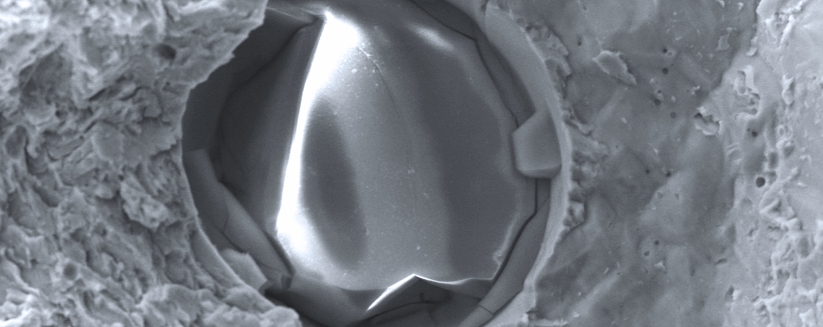Damage analysis – Evaluating causes
and effects experimentally
Despite new, innovative production technologies and manufacturing routines, cases of damage
are still occurring as a result of product defects, Installation errors or incorrect operation.
Causes may be material based and/or production related. In addition, a faulty design can cause product failure
or damage can result from loads or external influences. In some industries, a tolerance for damage also belongs
to the safety concept.
Through a rigorous systematic approach, we can examine the direct cause of the damage by utilising material
analysis methods. Out experienced materials engineers will assist you in order to determine the cause of damage
to your machinery, systems, plants and components.
Our portfolio
Possible causes of damage could be:
- Construction (errors in design, deficiencies in execution)
- Material/material selection (type, batch)
- Manufacturing and production (processing errors, heat treatment, connection technology, lubrication technology)
- Operation (mechanical, thermal, media, corrosive, tribological load)
- Environment (weather, external currents, radiation, microbial load, load introduction)
- Combinations of the aforementioned factors
Damage Analysis by means of materialography
We will identify the type of damage for you and determine the reason why this occurs. In doing so, we also utilise
mechanical technology related, physical, material analysis and materialographic examination Methods.
The following test technology is thereby available to us:
- Materialographic preparation technology
- Stereo microscopes, reflected light microscopes and light penetration microscopes
- Digital computer-aided image documentation and image processing
- Scanning electron microscope with connected EDX analysis
- Hardness measuring devices (HBW, HV, HRC, UCI)
- Surface profiling device for recording roughness profiles
- Spark emission spectrometer for chemical analysis of metallic materials
- Testing technology for implementing tensile, compression and bending tests
Damage Analysis by means of thermal analysis
Damage patterns on plastic products can be additionally characterised by thermal analysis, such as determining the glass transition temperature, melting temperature, crystallinity, thermal stability or the melting behaviour. Statements can be derived with regard to the cause of the damage and the mechanisms of damage due to thermal load or stress.
Testing methods
- DSC (Differential Scanning Calometry)
- TMA (Thermal Mechanical Analysis)
Damage Analysis by means of non-destructive testing
We can support you in the non-destructive analysis of metallic materials and fibre composites, as well as in component examinations,
either in our own laboratories or also on-site at your company.
Our testing personnel are certified in accordance with ISO 9712 and/or DIN EN 4179.
We are qualified for the following procedures:
|
|
|
|
|
|
|
|
Clarification of product failure cause
Despite careful testing as well as design, production and manufacturing, faults and damage can still occur on products when the intended method of operation is also complied with. It is therefore essential to investigate and clarify the causes of damage and effects which the fault will create by means of systematic examinations.
For this purpose, we bundle the interdisciplinary efforts from of our testing areas and support industry, expert assessors and courts in the detection of all potential influences on the cause of damage. The basis for this is created by the VDI Guideline 3822 for systematic damage analysis.
Service provided:
- Documentation of the damage pattern
- Determining the utilised materials, micro-structure and mechanical coefficients
- Evaluating the status (fracture surface, surface area, corrosion, design principle, manufacturing, production and jointing technology)
- Inspecting the design, version and implementation of comparative experiments
- Creating detailed test reports with examination results
Expert assessor activity
Do you need expert assessor support in investigating the damage? Then we will be pleased to assist you with our own recognised specialists.
Or do you need a legally valid expert assessment? We will be pleased to provide you with publicly appointed and
sworn experts and expert assessors.
Are you an expert assessor and need support? We substantiate the results of your expert assessment based on detailed investigations and
their interpretation.























